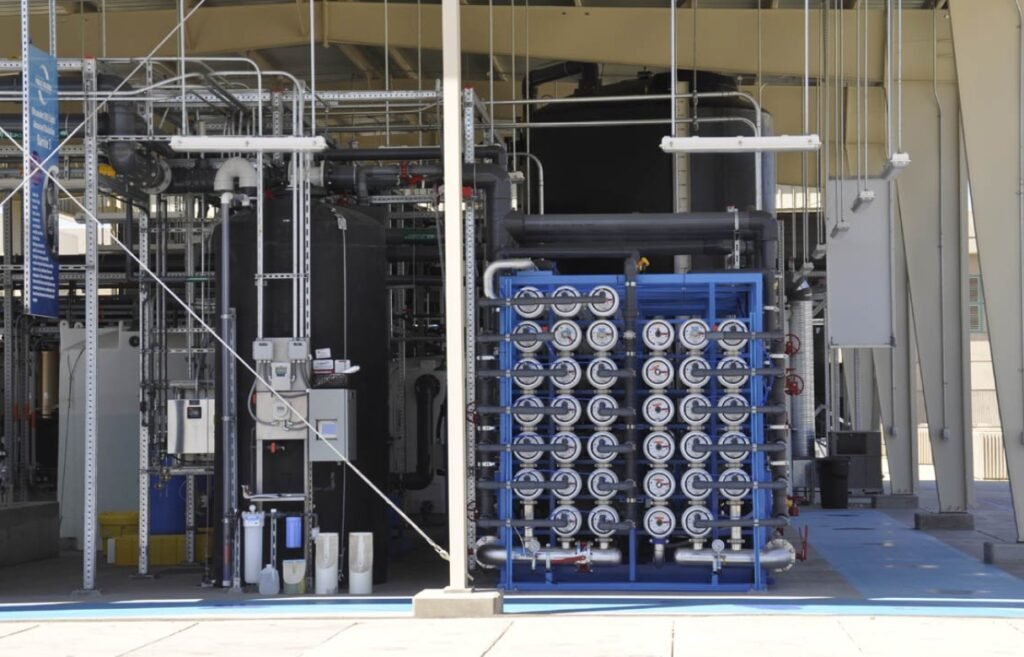California has become the first state in the nation to approve regulations that will allow for the direct reuse of treated wastewater for drinking water purposes. The new rules, which were adopted by the State Water Resources Control Board on Tuesday, are expected to create a new source of water supply for the drought-prone state and reduce the amount of wastewater that is discharged into the ocean.
The new rules, which were mandated by a 2010 law, will enable water agencies to implement what is known as “direct potable reuse” or DPR. This means that wastewater that has been treated to meet or exceed all drinking water standards can be piped directly into drinking water systems or blended with other sources of water before reaching a treatment plant.

The rules require that the wastewater undergo an extensive and multi-step treatment process that includes ozonation, biological filtration, activated carbon filtration, reverse osmosis, advanced oxidation and ultraviolet disinfection. The treated water must also be monitored continuously for contaminants and pathogens, and undergo regular testing by independent laboratories.
The rules also specify the minimum retention time and distance that the treated water must travel before reaching consumers, as well as the minimum dilution ratio that must be achieved with other sources of water. The rules also establish a framework for public notification and outreach, as well as contingency plans in case of emergencies or failures.
Why is California pursuing direct potable reuse?
California has been using recycled water for non-potable purposes, such as irrigation, industrial uses and groundwater recharge, for decades. However, the state faces increasing challenges in meeting its water demands due to population growth, climate change, environmental needs and aging infrastructure.
According to the State Water Board, California currently uses about 700,000 acre-feet of recycled water per year, but has the potential to use up to 2.8 million acre-feet per year by 2030. Direct potable reuse could provide up to 1.1 million acre-feet of additional water supply per year, enough to serve more than 8 million people.
Direct potable reuse could also help reduce the reliance on imported water, which is vulnerable to droughts, earthquakes and legal disputes, and conserve the state’s natural resources, such as rivers, lakes and aquifers. Moreover, direct potable reuse could reduce the amount of wastewater that is discharged into the ocean, which could have environmental and economic benefits.
What are the benefits and challenges of direct potable reuse?
Supporters of direct potable reuse say that it is a safe, reliable and sustainable way to augment the state’s water supply and diversify its water portfolio. They point to the success of similar projects in other countries, such as Singapore, Australia and Namibia, as well as the positive results of pilot projects in California, such as the Pure Water San Diego and the Pure Water Monterey programs.
They also say that direct potable reuse could provide cost savings in the long run, as it could reduce the need for building new dams, reservoirs, pipelines and desalination plants. They argue that direct potable reuse could also create jobs, stimulate innovation and foster collaboration among water agencies, regulators, researchers and the public.
However, direct potable reuse also faces some challenges, such as public perception, cost, energy use and regulatory uncertainty. Some people may have reservations about drinking water that was once sewage, even if it has been treated to the highest standards. Some water agencies may also face financial and technical barriers to implement direct potable reuse, as it requires significant capital investment, operational expertise and maintenance.
Direct potable reuse also requires more energy than conventional water sources, which could increase greenhouse gas emissions and affect the state’s climate goals. Additionally, direct potable reuse is subject to federal, state and local regulations, which may vary or change over time, creating uncertainty and complexity for water agencies.
What are the next steps and the future prospects for direct potable reuse?
The new rules, which will take effect in April 2023, are not the final word on direct potable reuse in California. The State Water Board will continue to review and update the rules as new information and technologies become available. The board will also develop guidance documents and training programs to assist water agencies in complying with the rules and obtaining permits.
The board will also conduct a feasibility study on the potential for direct potable reuse through raw water augmentation, which means adding treated wastewater to surface water sources, such as rivers and reservoirs, before they reach a treatment plant. The board is required to submit a report to the Legislature by December 2026 on whether this option is technically feasible and protective of public health.
Meanwhile, several water agencies in California are already planning or pursuing direct potable reuse projects, such as the Metropolitan Water District of Southern California, the Los Angeles County Sanitation Districts, the Santa Clara Valley Water District and the City of Los Angeles. These projects could provide hundreds of thousands of acre-feet of new water supply for the state in the coming years.
Direct potable reuse is expected to play an increasingly important role in California’s water future, as the state faces more frequent and severe droughts, as well as growing water demands and challenges. By turning wastewater into drinking water, California could turn a challenge into an opportunity, and a waste into a resource.
